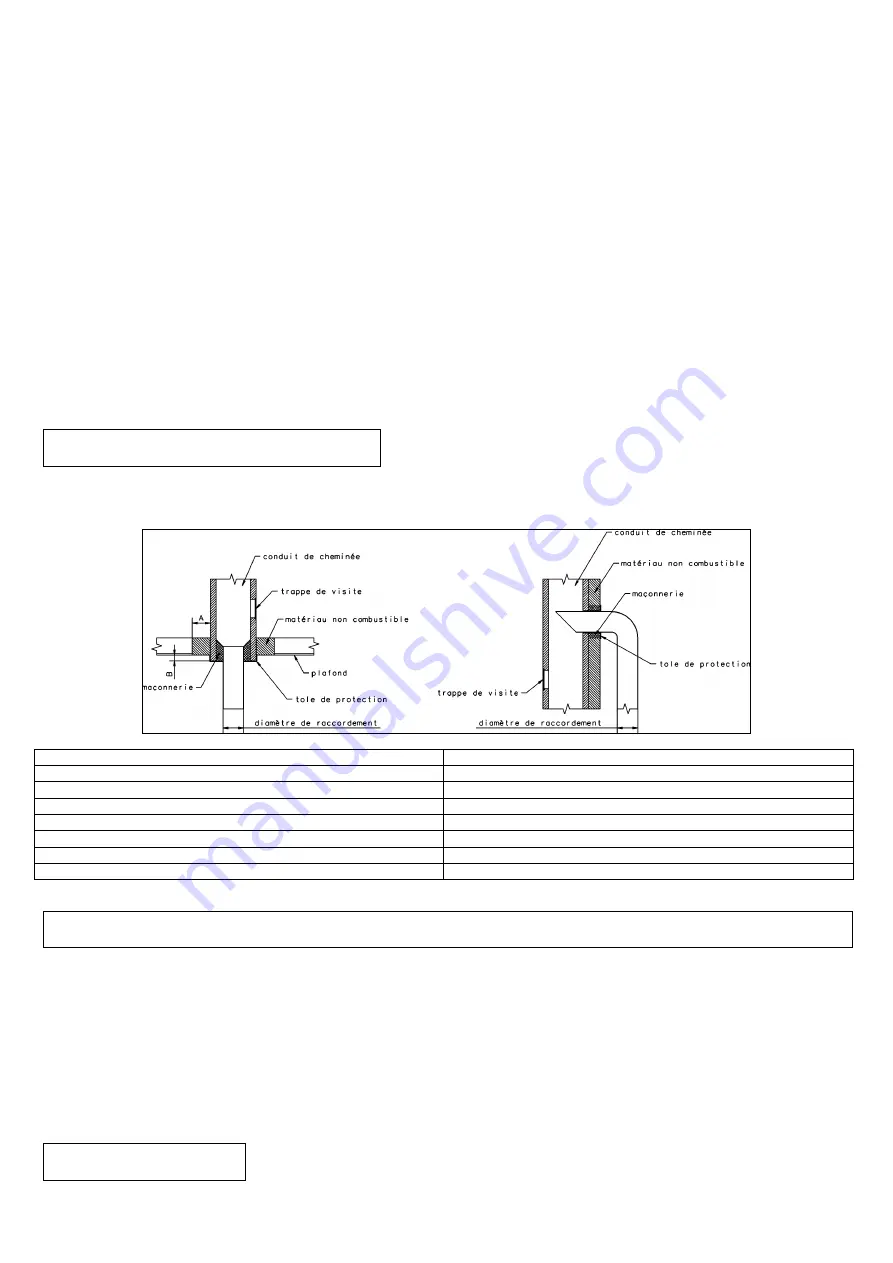
3/8
Air inlets in the room should never be clogged. They should be positioned in a way to prevent their clogging. The appliance uses
air from the room of its location, that is why it is necessary to ensure a sufficient supply by outside air.
These appliances cannot be connected to a multiple flue lining.
The flue collar is mounted at the factory and fixed at the back of the appliance (if the back connection is possible). You may
connect it directly to the flue by means of a horizontal tube. It can be also connected on the top, in this case it will be necessary to
change the position of the flue collar and the stopper.
IMPORTANT:
Check if the floor has a sufficient bearing capacity. If necessary, place a panel for the distribution of loading pressure or take any
adequate and necessary steps.
If the floor is made of combustible material, it is recommended to protect it by means of an insulated panel made from
non-combustible material and standing out at least 40 cm in front of the chimney.
Use tubes of recommended diameters and enamelled if possible, as their resistance to corrosion in the smoke is remarkably
good.They should be as short as possible so that the heat contained in the smoke can be used to initiate draft.
The wall behind the chimney should not contain any combustible material.
If it does, you should protect it adequately (using
material classified as Mo or A2-s1,do). The security distance between the combustible material and the back of the appliance
should be at least
40
cm.
If the walls situated on the both sides of the appliance are made of combustible material, the distance between these walls and the
appliance should be at least
40
cm.
In case of a traditional stove, the ceiling should be located at least 80 cm from the top of the appliance.
The appliance irradiates naturally, so it is recommended to keep any combustible material (wooden chairs, sofas,…) in front of the
appliance at least at
150
cm distance.
The appliance should be connected in accordance with the DTU 24.1. The security distances between the outside of the connection duct and the flue
lining and any combustible material (A) should observe the specifications of this standard. They depend mostly on the type of the duct, its
temperature resistance and its temperature class. No connection should be made in the floor (B offset should be used).
French
English
Conduit de cheminée
Flue lining
Trappe de visite
Cleanout door
Matériau non combustible
Non-combustible material
Plafond
Ceiling
Tôle de protection
Protection sheet
Diamètre de raccordement
Connection diameter
Maçonnerie
Masonry
Example of a flue lining connection
Before using the appliance, read the instructions and recommendations carefully.
The appliance should be installed in accordance with national regulations in force in the country where it is installed.
We recommend having the appliance installed by a professional fitter.
Air inlets should never be clogged.
The appliance should be connected to a flue lining that is not used for any other appliance. It cannot function as a multiple flue
lining.
Never modify the appliance without prior authorisation.
The appliance should not be used with the door open.
All the surfaces of the appliance are active (hot), take all the precautions to avoid burning.
Take all the necessary precautions to keep children and elderly people sufficiently far from the appliance to avoid accidents.
LIGHTING - ADJUSTING
INSTRUCTIONS FOR USERS
CONNECTION TO THE FLUE LINING








